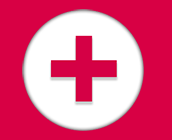Nursing simulation allows students to practice their skills in a safe and controlled environment. We’ll provide insights into what to expect during nursing simulation, including the types of scenarios practiced, the technology used, and where you can go to experiment with these tools.
Types of Scenarios Practiced in the Simulation Lab
In the simulation lab, students encounter various scenarios that simulate real-life patient care situations. These scenarios are designed to challenge students’ critical thinking and clinical decision-making skills.
Common scenarios include:
1. Medical Emergencies
Students may face simulated emergencies such as cardiac arrest, respiratory distress, or severe trauma cases. These scenarios test their ability to respond quickly and effectively while maintaining composure under pressure.
2. Patient Assessments
Simulating patient assessments will allow students to practice gathering vital signs, conducting physical examinations, and recognizing abnormal findings that require immediate intervention.
3. Medication Administration
Nursing simulation provides opportunities for practicing medication administration techniques accurately and safely while adhering to proper protocols.
Technology Used in Nursing Simulation
Advancements in technology have revolutionized nursing simulation. The types of simulation models used are created to replicate patient scenarios in a realistic and safe environment.
The technology used in nursing simulations includes:
1. Manikins
High-fidelity manikins with realistic anatomical features allow students to practice clinical procedures such as CPR, intubation, or wound dressing. Manikins can simulate vital signs, lung sounds, and heart murmurs and even respond to interventions.
2. Virtual Reality (VR)
Virtual reality platforms provide an immersive experience where students can interact with virtual patients in simulated environments. VR enhances critical thinking skills by allowing learners to make decisions that influence patient outcomes while receiving immediate feedback.
3. Computer-based Simulations
These simulations utilize software programs that mimic patient care scenarios through interactive case studies or virtual clinical experiences. They often incorporate quizzes or assessments to reinforce learning outcomes.
Student Preparation Before Participating in Simulation Exercise
To maximize the benefits of nursing simulation exercises, students are expected to prepare beforehand adequately in the following ways:
1. Reviewing Theoretical Knowledge
Students should revisit relevant textbooks or lecture notes related to the topics covered in the upcoming simulation exercise.
2. Understanding Protocols and Procedures
It’s essential to be familiar with hospital policies and best practices before engaging in any simulated scenario with patient care.
3. Practicing Technical Skills
Prior practice sessions on clinical techniques like medication administration or physical assessments help build confidence when applying these skills during simulations.
4. Effective Time Management
Students should allocate sufficient time for preparation, ensuring they arrive well-rested and mentally prepared for the simulation exercise.
If you are passionate about pursuing a career in nursing and seeking a reputable nursing school that prioritizes training through state-of-the-art simulation labs, we encourage you to consider Cambridge College of Healthcare & Technology.
Our institution is dedicated to providing exceptional education where students gain practical experience through realistic nursing simulations. Take the first step towards your future as a skilled nurse by exploring our nursing program offerings today.
More On:


